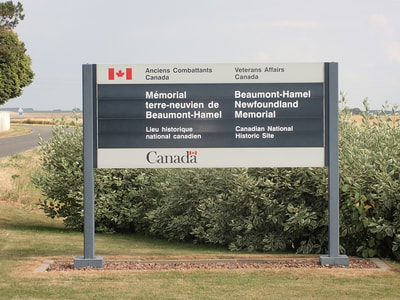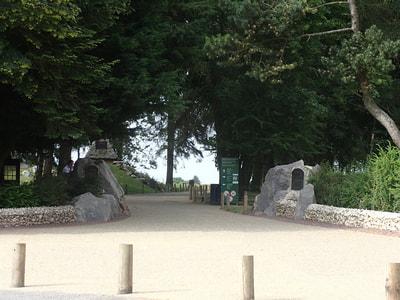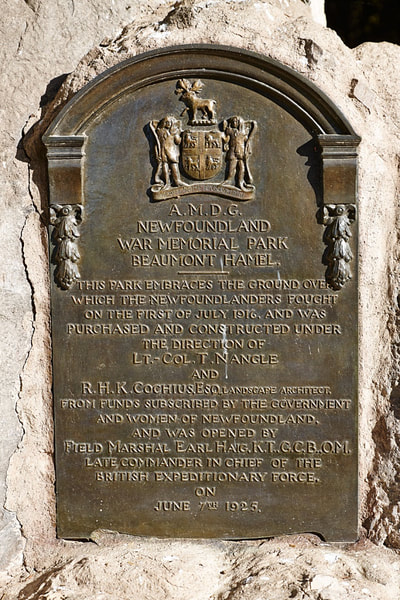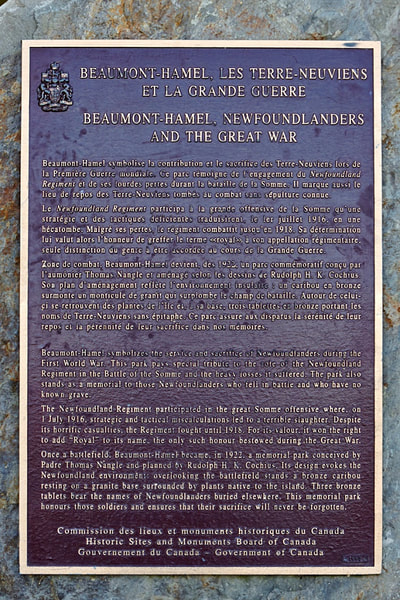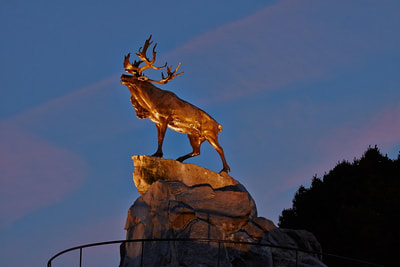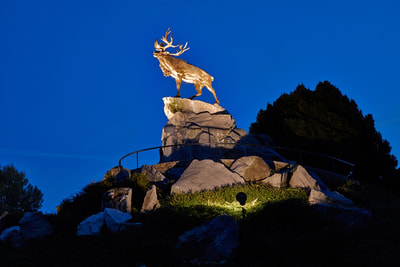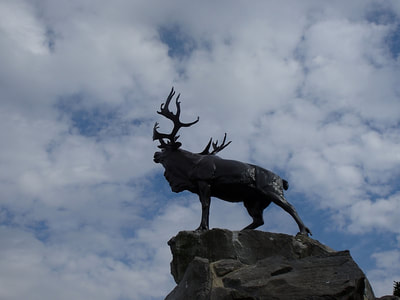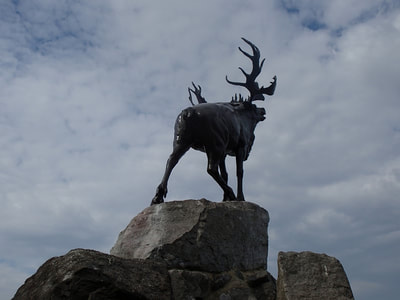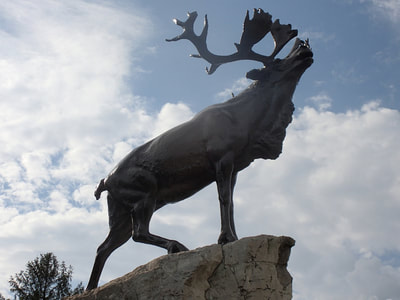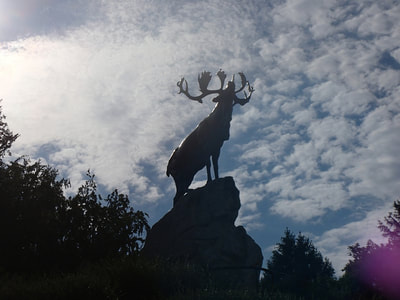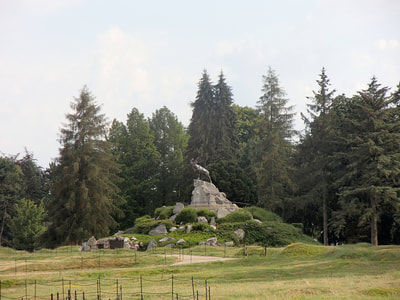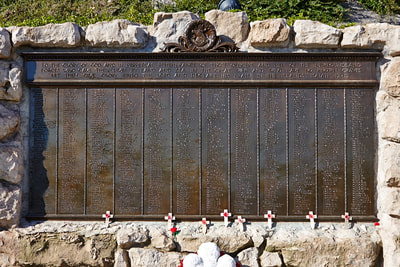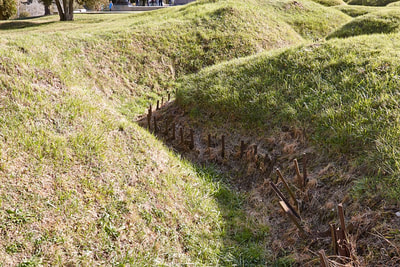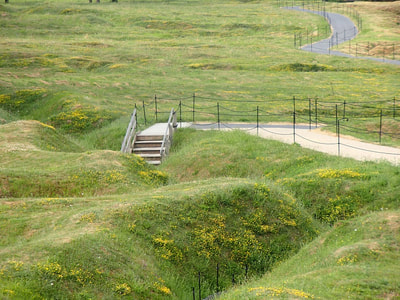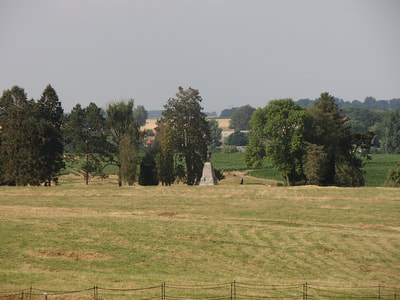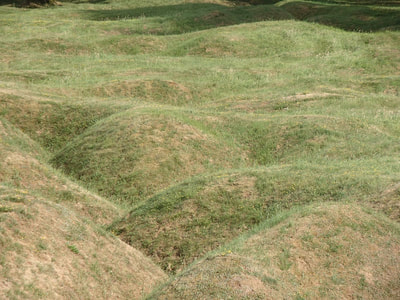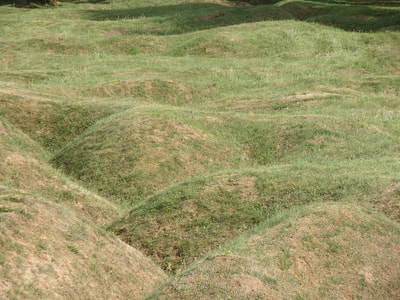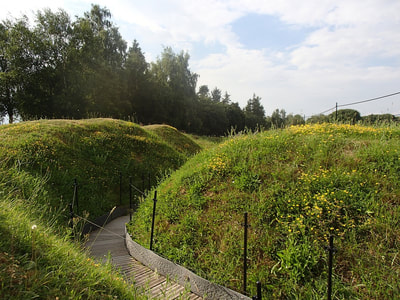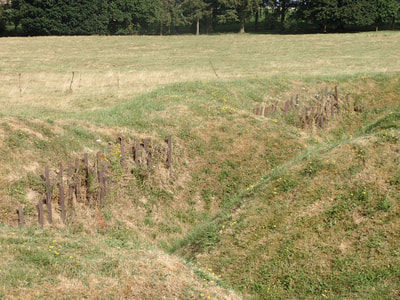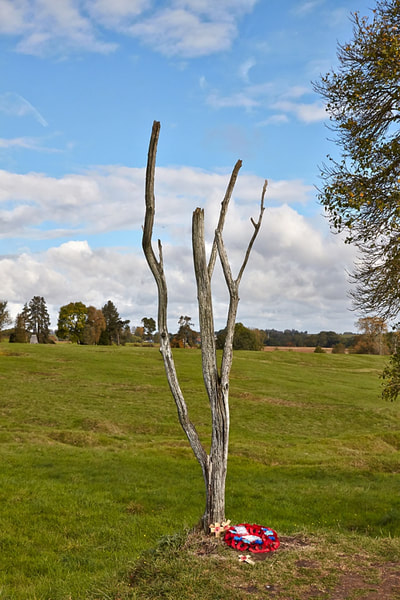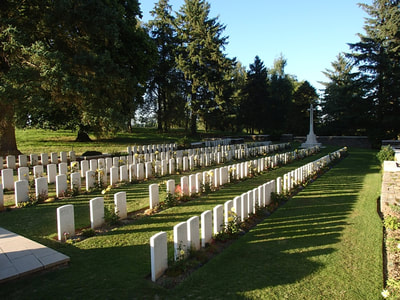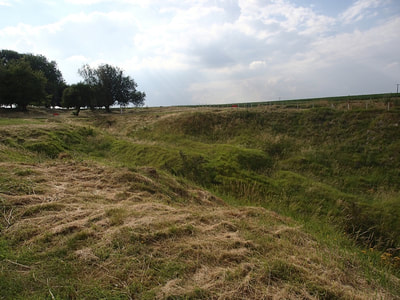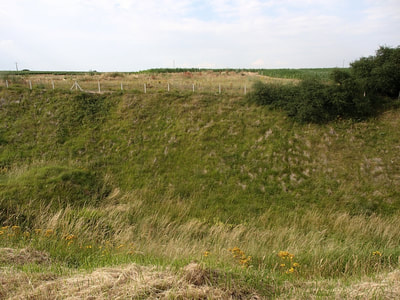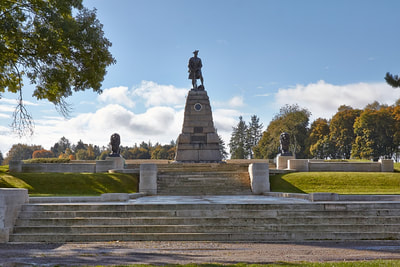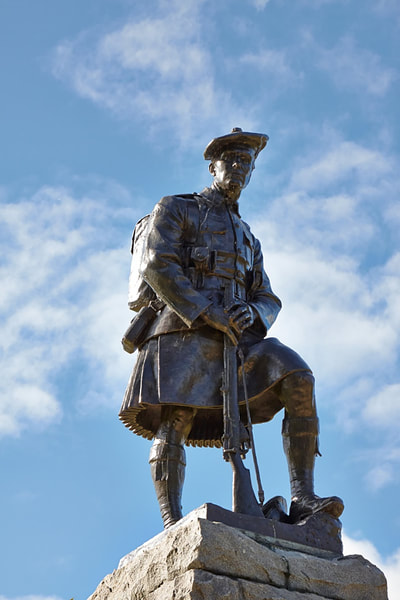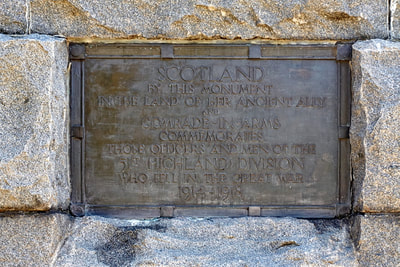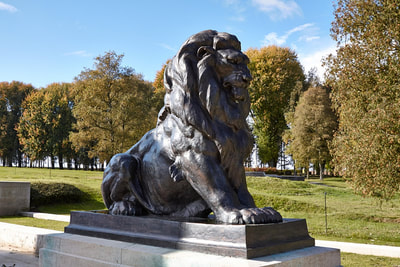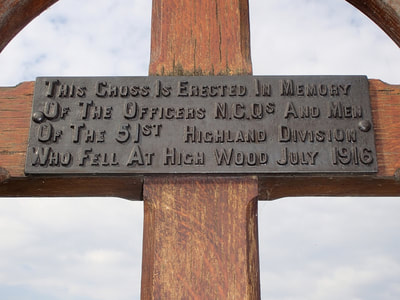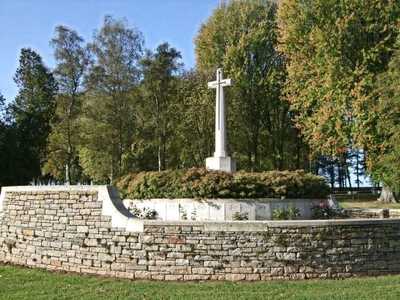NEWFOUNDLAND MEMORIAL PARK
Beaumon-Hamel
Somme
France
Image above © Carl Liversage @carl_liversage
The Beaumont-Hamel Newfoundland Memorial Park is a memorial site in France dedicated to the commemoration of Dominion of Newfoundland forces members who were killed during World War I. The 74-acre (300,000 m2) preserved battlefield park encompasses the grounds over which the Newfoundland Regiment made their unsuccessful attack on 1 July 1916 during the first day of the Battle of the Somme.
The Battle of the Somme was the regiment's first major engagement, and during an assault that lasted approximately 30 minutes the regiment was all but wiped out. Purchased in 1921 by the people of Newfoundland, the memorial site is the largest battalion memorial on the Western Front, and the largest area of the Somme battlefield that has been preserved. Along with preserved trench lines, there are a number of memorials and cemeteries contained within the site.
Officially opened by British Field Marshal Earl Haig in 1925, the memorial site is one of only two National Historic Sites of Canada located outside of Canada. (The other is the Canadian National Vimy Memorial). The memorial site and experience of the Newfoundland Regiment at Beaumont-Hamel has come to represent the Newfoundland First World War experience. As a result, it has become a Newfoundland symbol of sacrifice and a source of identity.
The Battle of the Somme was the regiment's first major engagement, and during an assault that lasted approximately 30 minutes the regiment was all but wiped out. Purchased in 1921 by the people of Newfoundland, the memorial site is the largest battalion memorial on the Western Front, and the largest area of the Somme battlefield that has been preserved. Along with preserved trench lines, there are a number of memorials and cemeteries contained within the site.
Officially opened by British Field Marshal Earl Haig in 1925, the memorial site is one of only two National Historic Sites of Canada located outside of Canada. (The other is the Canadian National Vimy Memorial). The memorial site and experience of the Newfoundland Regiment at Beaumont-Hamel has come to represent the Newfoundland First World War experience. As a result, it has become a Newfoundland symbol of sacrifice and a source of identity.
Entrance to Park
29th Division Memorial
Near the entrance to site is situated a memorial to the 29th British Division, the division of which the Newfoundland Regiment was a part. Lieutenant-General Beauvoir De Lisle, wartime commander of the 29th British Division, unveiled the monument the morning of the official opening of the site on 7 June 1925. Each wartime unit of the 29th British Division sent a representative to form a guard of honour for the occasion. Afterwards, this detachment, joined by French infantry from Arras formed the honour guard for the unveiling of the Beaumont-Hamel Newfoundland Memorial.
Newfoundland Regiment Memorial
The memorial is one of six memorials erected by the Government of Newfoundland following the First World War. Five were erected in France and Belgium and the sixth at Bowring Park in St. John's, Newfoundland, Canada. The memorial is a bronze caribou, the emblem of the Royal Newfoundland Regiment, standing atop a cairn of Newfoundland granite facing the former foe with head thrown high in defiance.
At the Beaumont-Hamel Newfoundland Memorial site the mound rises approximately 50 feet (15 m) from ground level. The mounds are also surrounded by native Newfoundland plants. At the base of the Beaumont-Hamel Newfoundland Memorial mound, three bronze tablets carry the names of 820 members of the Royal Newfoundland Regiment, the Newfoundland Royal Naval Reserve, and the Mercantile Marines who gave their lives in the First World War and have no known grave. The memorial is situated close to the headquarters dugout of the 88th Brigade, the brigade of which the Newfoundland Regiment was a part.
Sixteen memorial designs were submitted to Nangle for review. He recommended that the government accept British sculptor Basil Gotto’s plan to erect five identical caribou statues in memory of the regiment. Gotto was already well known in Newfoundland as he had been previously commissioned to execute the statue of the Fighting Newfoundlander located in Bowring Park.
The landscape architect who designed the sites and supervised their construction, was Rudolph Cochius, a native of the Netherlands living in St. John's. It was decided to plant many of Newfoundland’s native tree species, such as spruce, dogberry and juniper, along the boundaries of the site. In total, over 5,000 trees were transplanted before the project was completed in 1925.
The memorial was unveiled at the official opening of the site by Field Marshal Earl Haig on 7 June 1925. Those that participated or were present included Chief of the French General Staff, Marshal of France Marie Émile Fayolle, Newfoundland Colonial Secretary John Bennett, Lieutenant Generals Aylmer Hunter-Weston and Beauvoir De Lisle, Major-General D. E. Cayley and former regimental commanding officers Lieutenant-Colonel Arthur Lovell and Adolph Ernest Bernard.
At the Beaumont-Hamel Newfoundland Memorial site the mound rises approximately 50 feet (15 m) from ground level. The mounds are also surrounded by native Newfoundland plants. At the base of the Beaumont-Hamel Newfoundland Memorial mound, three bronze tablets carry the names of 820 members of the Royal Newfoundland Regiment, the Newfoundland Royal Naval Reserve, and the Mercantile Marines who gave their lives in the First World War and have no known grave. The memorial is situated close to the headquarters dugout of the 88th Brigade, the brigade of which the Newfoundland Regiment was a part.
Sixteen memorial designs were submitted to Nangle for review. He recommended that the government accept British sculptor Basil Gotto’s plan to erect five identical caribou statues in memory of the regiment. Gotto was already well known in Newfoundland as he had been previously commissioned to execute the statue of the Fighting Newfoundlander located in Bowring Park.
The landscape architect who designed the sites and supervised their construction, was Rudolph Cochius, a native of the Netherlands living in St. John's. It was decided to plant many of Newfoundland’s native tree species, such as spruce, dogberry and juniper, along the boundaries of the site. In total, over 5,000 trees were transplanted before the project was completed in 1925.
The memorial was unveiled at the official opening of the site by Field Marshal Earl Haig on 7 June 1925. Those that participated or were present included Chief of the French General Staff, Marshal of France Marie Émile Fayolle, Newfoundland Colonial Secretary John Bennett, Lieutenant Generals Aylmer Hunter-Weston and Beauvoir De Lisle, Major-General D. E. Cayley and former regimental commanding officers Lieutenant-Colonel Arthur Lovell and Adolph Ernest Bernard.
Beaumont-Hamel Newfoundland Memorial
The memorial itself stands at the highest point of the park and consists of a great caribou cast in bronze, emblem of the Royal Newfoundland Regiment. At the base, three tablets of bronze carry the names of over 800 members of the Royal Newfoundland Regiment, the Newfoundland Royal Naval Reserve and the Newfoundland Mercantile Marine, who gave their lives in the First World War and who have no known grave. Erroneously included on the memorial is the name of W. Pilgrim who survived the war and whose details will not appear within the C.W.G.C. records. The memorial designed by R.H.K. Cochius, with sculpture by Basil Gotto. It was unveiled by Earl Haig on 7 June 1925.
Trenches
Danger Tree (L'Arbre du Danger)
The Danger Tree had been part of a clump of trees located about halfway into No Man's Land and had originally been used as a landmark by a Newfoundland Regiment trench raiding party in the days before the Battle of the Somme. British and German artillery bombardments eventually stripped the tree of leaves and left nothing more than a shattered tree trunk. During the Newfoundland Regiment's infantry assault, the tree was once again used as a landmark, where the troops were ordered to gather. The tree was however a highly visible landmark for the German artillery and the site proved to be a location where the German shrapnel was particularly deadly. As a result, the regiment suffered a large concentration of casualties around the tree. A replica representation of the twisted tree now stands at the spot.
"Y" Ravine Cemetery
The cemetery was made by the V Corps in the spring of 1917, when these battlefields were cleared. It was called originally "Y" Ravine Cemetery No.1. No.2 cemetery was concentrated after the Armistice into Ancre British Cemetery, Beaumont-Hamel.
There are now over 400, 1914-18 war casualties commemorated in this site. Of these, over a third are unidentified and special memorials are erected to 53 soldiers (or sailors or Marines) from the United Kingdom and eight from Newfoundland, known or believed to be buried among them.
There are now over 400, 1914-18 war casualties commemorated in this site. Of these, over a third are unidentified and special memorials are erected to 53 soldiers (or sailors or Marines) from the United Kingdom and eight from Newfoundland, known or believed to be buried among them.
"Y" Ravine
51st Highland Division Memorial
Overlooking Y Ravine is the memorial to 51st (Highland) Division. The ground originally donated by the commune of Beaumont-Hamel to the Veterans of the 51st Division was found to be unstable because of the many dugouts beneath it. Lieutenant Colonel Nangle offered a location overlooking Y Ravine within the Beaumont-Hamel Newfoundland Memorial site. The Y ravine had been the scene of fierce fighting for the division on 13 November 1916. The selected sculptor for the 51st Division Monument was George Henry Paulin. The base of the monument consists of rough blocks of Rubislaw granite which were produced by Garden & Co. in Aberdeen, Scotland, and are assembled in a pyramid form. Company Sergeant Major Bob Rowan of the Glasgow Highlanders was used as the model for the kilted figure atop the memorial. The figure faces east towards the village of Beaumont-Hamel. On the front is a plaque inscribed in Gaelic: La a'Blair s'math n Cairdean which in English translates as "Friends are good on the day of battle". The 51st Division Monument was unveiled on 28 September 1924 by Marshal of France Ferdinand Foch, the former Allied Supreme Commander. The memorial was rededicated on 13 July 1958, the front panel now referring to not only those who died during the First World War but the Second as well. A wooden Celtic cross directly across the track from the memorial was originally sited at High Wood and subsequently moved to the Newfoundland site. The cross commemorates the men of the 51st Highland Division who fell at High Wood in July 1916.
Hunters Cemetery
Hunter's Cemetery (the origin of the name may refer to a Chaplain attached to the Black Watch, the Rev. Hunter) is, in fact, a great shell-hole, in which soldiers of the 51st Division, who fell in the capture of Beaumont-Hamel, were buried after the battle.
There are now over 40, 1914-18 war casualties commemorated in this site.
There are now over 40, 1914-18 war casualties commemorated in this site.
Hawthorn Ridge Cemetery, No. 2
Hawthorn Ridge Cemetery No.2 is 460 metres South of No.1. It was made by the V Corps (as V Corps Cemetery No.12) in the spring of 1917, and seven isolated graves were brought in after the Armistice.
There are now over 200, 1914-18 war casualties commemorated in this site. Of these, over 50 are unidentified. The great majority fell on the 1st July, 1916.
There are now over 200, 1914-18 war casualties commemorated in this site. Of these, over 50 are unidentified. The great majority fell on the 1st July, 1916.


